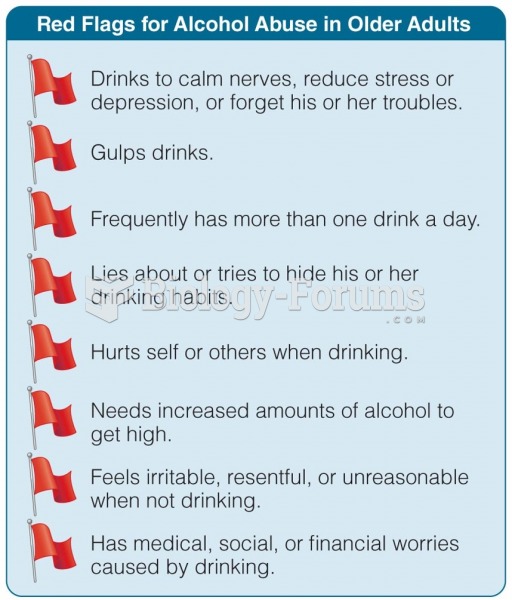|
|
|
Asthma cases in Americans are about 75% higher today than they were in 1980.
Drugs are in development that may cure asthma and hay fever once and for all. They target leukotrienes, which are known to cause tightening of the air passages in the lungs and increase mucus productions in nasal passages.
Although not all of the following muscle groups are commonly used, intramuscular injections may be given into the abdominals, biceps, calves, deltoids, gluteals, laterals, pectorals, quadriceps, trapezoids, and triceps.
People with high total cholesterol have about two times the risk for heart disease as people with ideal levels.
More than 34,000 trademarked medication names and more than 10,000 generic medication names are in use in the United States.






